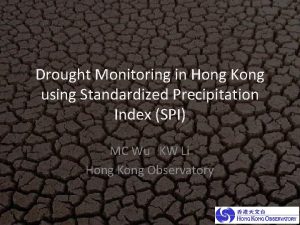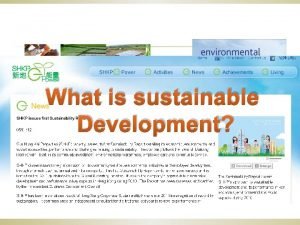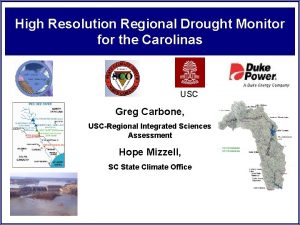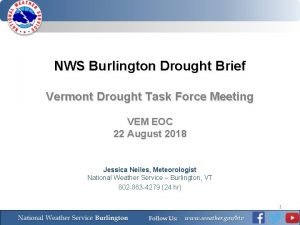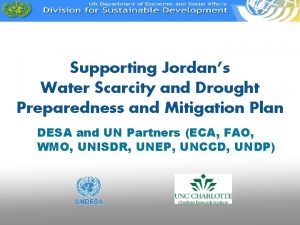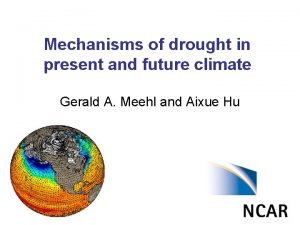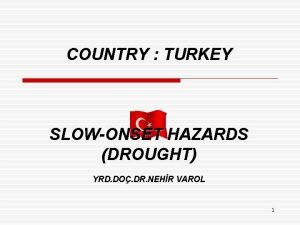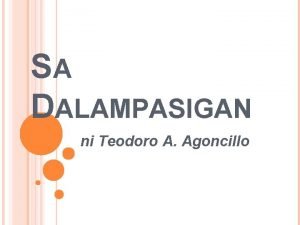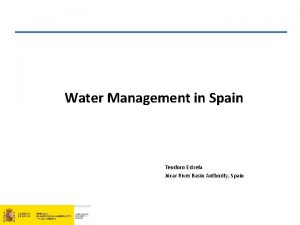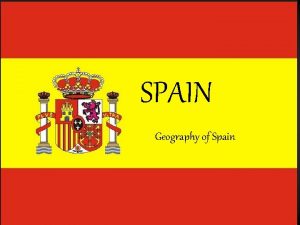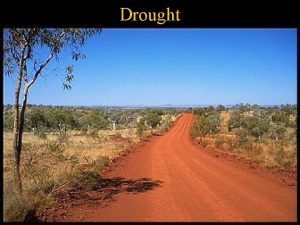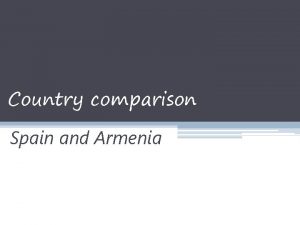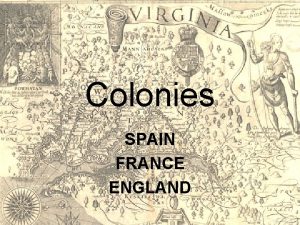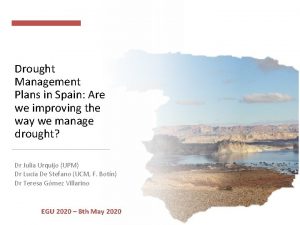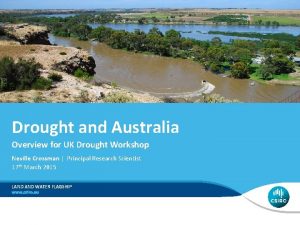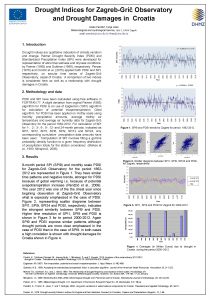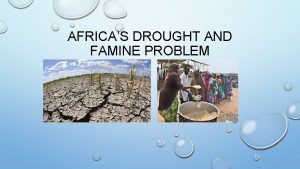Drought Planning and management in Spain Teodoro Estrela

















- Slides: 17

Drought Planning and management in Spain Teodoro Estrela Deputy Water Director on Water Planning and Sustainable Water Use

Contents • Legal framework • Drought management plans • 2004 -2008 Drought • • Drought Management Plans Regulations developed Measures carried out Main conclusions

Legal framework

Drought management as an emergency situation Water Act (1985), in art. 58, foresees during exceptional drought circumstances, adopting the adequate measures in the public water domain for overcoming these situations through a royal Decree issued by the Government, agreed by the Council of Ministers, and heard the River Basin Authority.

Policy bases for Drought Management Plans Law 10/2001, July 5, of the Hydrological Water Plan, establishes the bases for the drought planned management. Article 27. Drought management Section 1. The Ministry of Environment, for river basin organizations will establish a global hydrologic indicator system that will allow foreseeing these situations, and will serve as general reference for river basin authorities for the formal declaration of emergency situations and eventual drought. Section 2. Basin Organizations will develop Drought Management Plans (DMP) for alert situations and eventual drought (exploitation rules and measures) Section 3. Public Administrations responsible for public urban supplying, for town of or above 20, 000 inhabitants, will provide: Emergency Plan for drought situations.

Drought Management Plans

DMP’s General characteristics Entities in charge: River Basin Authorities Objective: minimize environmental, social and economic impacts of drought situations Contents: includes diagnosis of situation (historical droughts, vulnerability of basin), indicators system (precipitation, river inflows in natural regime, stored volume in surface reservoirs, water levels in aquifers), programme of measures to be applied in each drought phase according to the drought status, management and follow-up system.

Development process of the DMPs ENVIRONMENTAL ENTITY PROMOTING ENTITY (River Basin) DMP INITIAL PLAN ROUGHT DRAFT Strategic Environmental Assessment INITIAL PLAN DRAFT PLAN PUBLIC CONSULTATION ENV. SUSTAINABILITY REPORT SCOPING REFERENCE DOCUMENT PUBLIC CONSULTATION STUDY AND RESPONSE OF COMPLAINTS MODIFICATIONS OF THE PLAN DRAFT PLAN PROPOSAL DEVELOPMENT OF ENVIRONMENTAL REPORT PLAN APPROVAL PUBLICATION OF THE PLAN APPLICATION OF THE PLAN FOLLOW UP AND CONTROL PLAN ADVERTISEMENT+ ENVIRONMENTAL MEASURES + FOLLOW-UP MEASURES FOLLOW UP OF ENVIRONMENTAL EFFECTS AND OF THE PLAN DEVELOPMENT PLAN FOLLOWUP

2004 -2008 Drought in Spain

Hydrologic Status 2004 - 2008

Drought Management Plans • Approval: Ministry of Environment Order. Publication in Official State Bulletin: 23/03/2007 • Reference documents formal declaration of drought situation and for drought management corresponding to period 2004 -2008 Indicator (measures to be Status applied as a function of hydrological status). Objective Type of measure TYPES OF MITIGATION MEASURES 0. 50. 2 - 0. 151 -0. 5 0. 4 -0. 3 -0. 2 0. 15 0. 1 -0 Normal Pre-alert Alert Emergency Planni Informationng control Conservation Restrictions Strategic Tactics Emergency

Global system of hydrological indicators Maps are published on a monthly base since december 2005 (web page of Ministry)

Regulations approved during 2004 -2008 drought • Law-Decrees: adoption of urgent measures to develop water markets, to establish fee exemptions, etc • Decrees: adoption of exceptional administrative measures to manage water resources and to palliate negative effects of droughts or to establish urgent irrigation works to save water. • Ministerial Orders: modification of zones in which Decrees or Law-Decrees can be applied depending on the drought evolution.

Works carried out from 2005

Map showing works carried out from 2005

Water Scarcity and droughts in EU: role of Spain • • • Spain, France, Italy and the EC have led an Expert Network on Water Scarcity and Droughts in the framework of CIS. Significant role of Expert Network on the Stakeholder Forum and in discussions about the CE Communication on Water Scarcity and Droughts to the EU Parliament (July 2007) Spain has led a “Drought Management Plans Report”, approved by EU Water Directors in November 2007. • Contributing to other international fora: CSD-16, UNECE, WWF, WWC Drought Strategy…

Conclusions on 2004 -2008 drought management • Drought management plans have revealed as essential tools for the management of drought situations. • Public Water Supply restrictions have not occurred in spite of being a large drought cycle of 4 years. • Water saves on irrigation have been a key element for the success of this water management policy. These water savings have been compensated economically with the exemption of fees when water supply were lower than 50% of the usual values.
 Poema sobre as estrelas
Poema sobre as estrelas Drought and desertification
Drought and desertification Drought sentence
Drought sentence Types of drought
Types of drought Concept of sustainable development
Concept of sustainable development Aleph toolbox
Aleph toolbox Drought presentation
Drought presentation Anasazi drought
Anasazi drought Mrsac maharashtra gov in jalyukt
Mrsac maharashtra gov in jalyukt Vermont drought monitor
Vermont drought monitor Utah drought map
Utah drought map Drought stopper system
Drought stopper system World, drought monitor
World, drought monitor Jordan drought
Jordan drought Drought present tense
Drought present tense What are solutions of drought
What are solutions of drought Tema sa elehiya para kay ram
Tema sa elehiya para kay ram Teodoro bava
Teodoro bava



